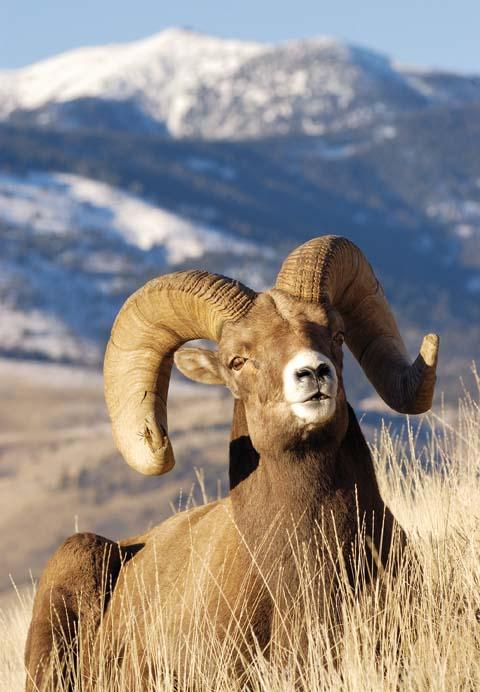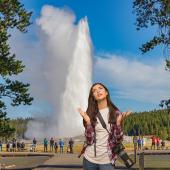Picture Perfect
Fall is a great time for wildlife photography. With the heat of long summer days behind them, animals are more active throughout the day and you should find ample opportunities for some great shots. Here are a few tips for getting the best images.
Gear Up
You don’t need a $10,000 lens to get good wildlife images. There are many good-quality “point and shoot” cameras on the market today that are very affordable. An interchangeable zoom lens (or a built-in one), which starts in the range of 18–70mm and extends to 200–300mm will work fine (as will a 10x optical zoom for point-and-shoot cameras). I use a 70–300mm zoom lens and a 300mm telephoto lens for 99% of my wildlife images.
Get an extra battery and memory card, and take them with you at all times. There’s nothing worse than running out of memory or power while you're trying to photograph a grizzly juggling ground squirrels. Keep your batteries charged, and remember that rechargeable batteries lose at least 1% of their power each day even when not in use.
Location, Location, Location
It sounds obvious, but head to an area where the animals are not hunted (i.e., national parks). Animals there have gotten habituated to humans and vehicles, and they will often let you get closer. You don’t need the 600mm monster lens that you can barely carry.
Use your vehicle as a blind. Many animals are used to vehicles and will not even acknowledge your presence—until you take one step outside. So stay in the car, roll down your window, and use a towel or small bean bag to rest your camera/lens on. It's also much warmer and dryer in your car on particularly crappy fall days.
Be a Steady Eddie
Shooting at the 200–300mm range can be a challenge because any shake or movement will blur your shots. Most cameras or lenses today have built-in shake-control features ("image stabilizers"). If you’re holding your camera (i.e., not using a tripod), turn this function on. I also recommend shooting at a shutter speed of at least 1/250th of a second. This will not only help eliminate your movement, but it will mitigate your subject’s movement as well.
Go to the Light
Many times in early morning, dusk, or foul weather, the available light will not allow you to use a fast shutter speed (it's too dark). That's when I push my ISO (light sensitivity) up to 200, 400, or even 800, thus giving me the extra shutter speed I desire. Be careful though: anything over 400 ISO can drastically reduce your image quality.
It's Not a Race
My last tip is the most important: patience! Lots and lots of patience. Remember, wild animals are on their time, not yours. The longer you spend with a subject, the better chance you have of getting great images. The great horned owls I photographed last month slept for over an hour before two ravens showed up and livened up the party. Had I left after 20 minutes, I never would have gotten any shots worth keeping. My general rule is, “when you’re ready to give up on a subject and move along, give it 10 more minutes.”
In closing, remember that all wild animals can be dangerous. Mother Nature demands respect for your sake and hers. A little respect and common sense will go a long way to helping you get the images you desire safely.
Mike Haring is a photographer and musician in Big Sky.











